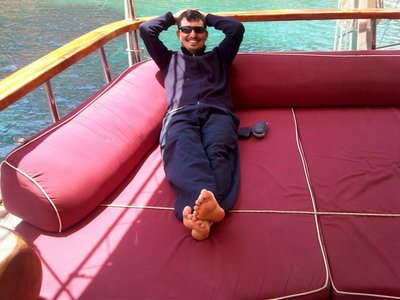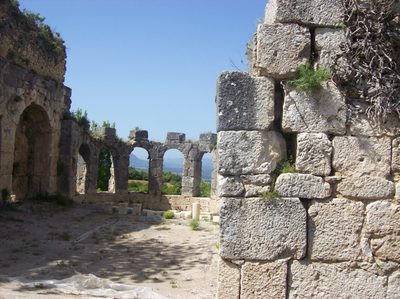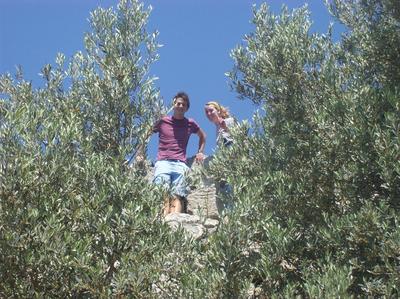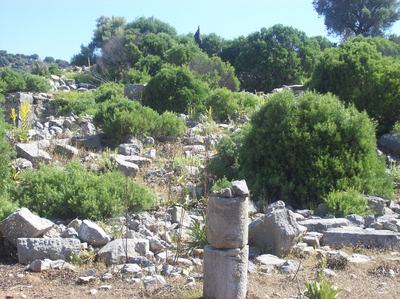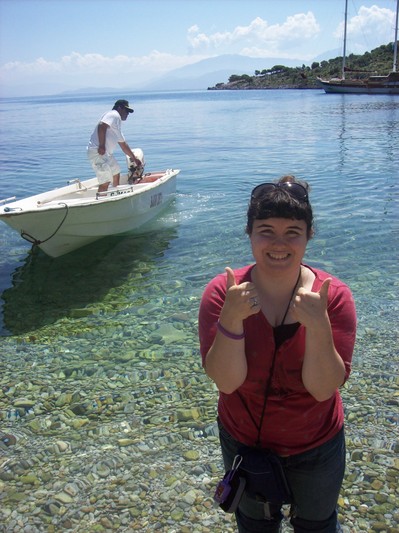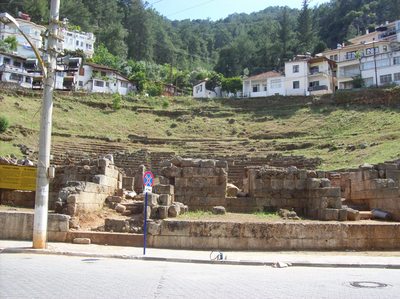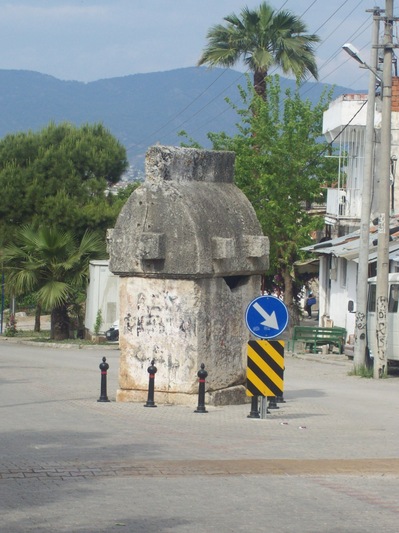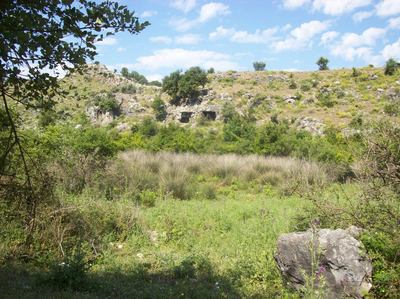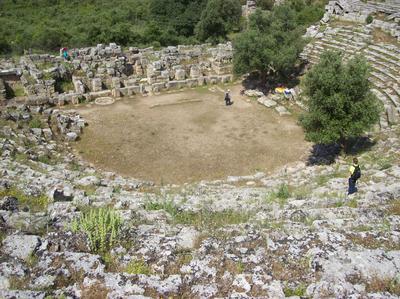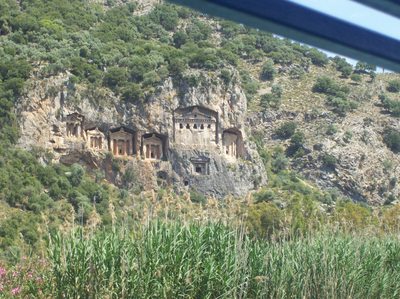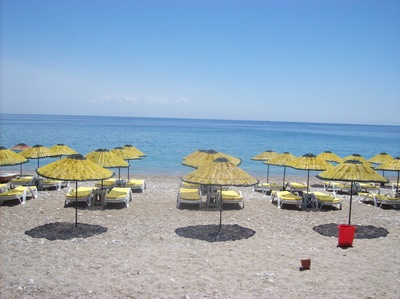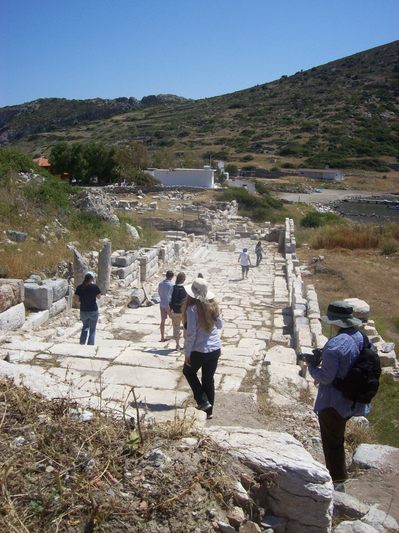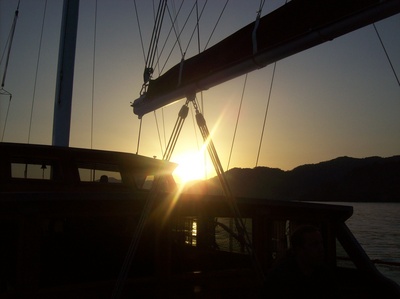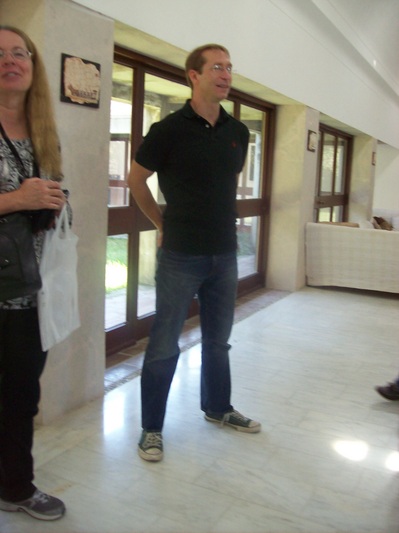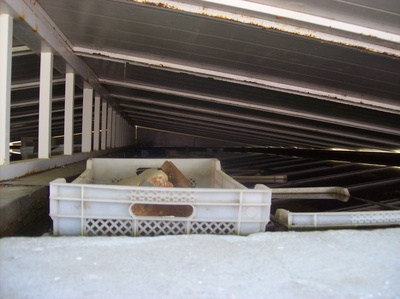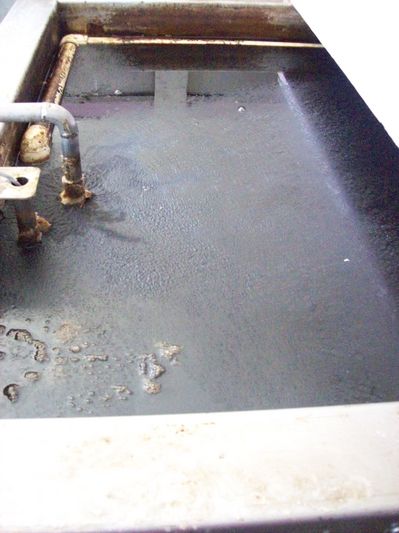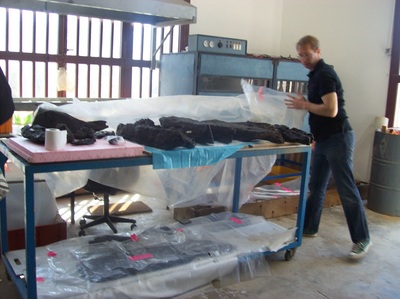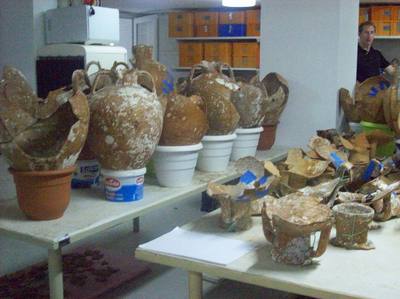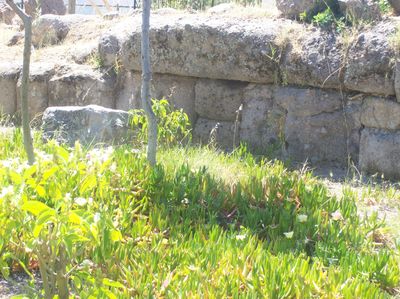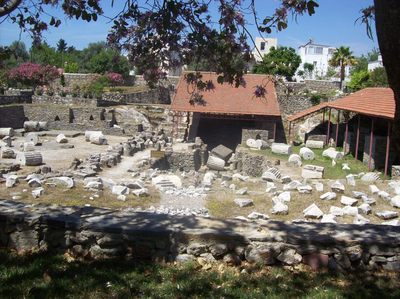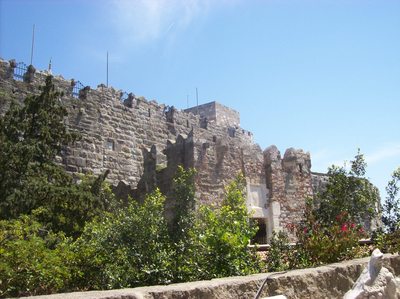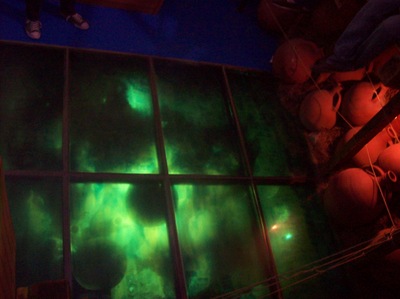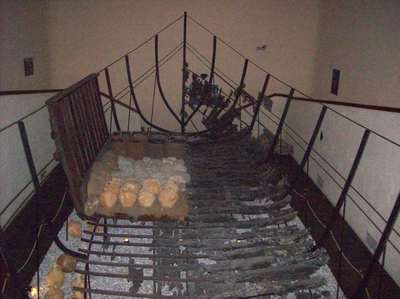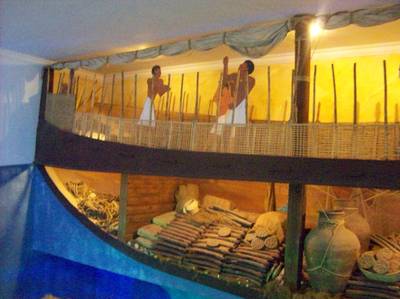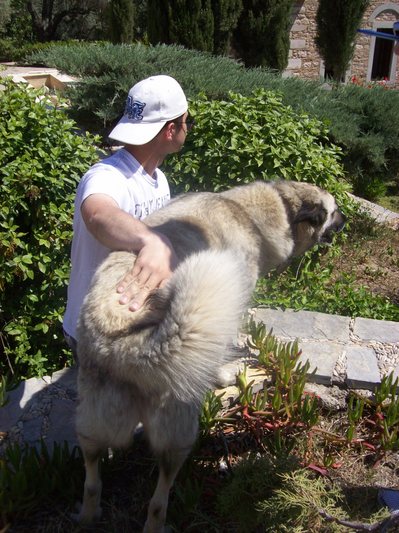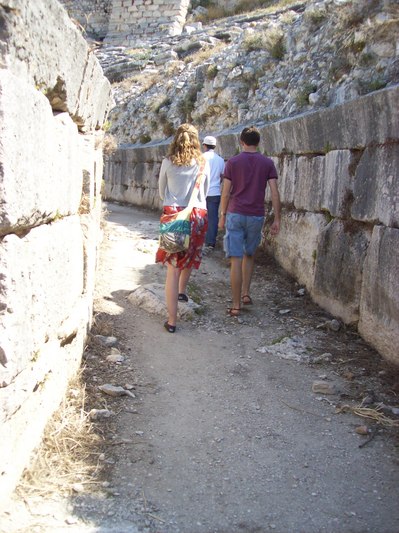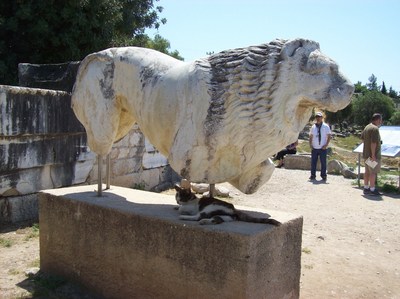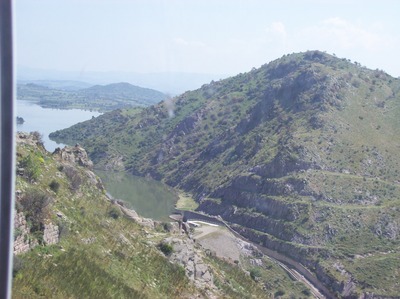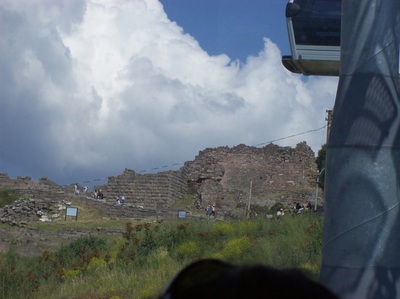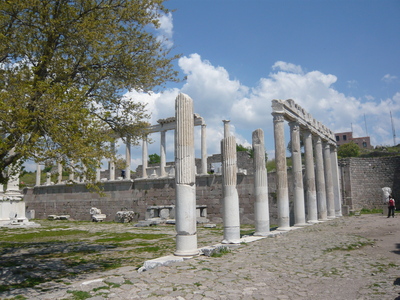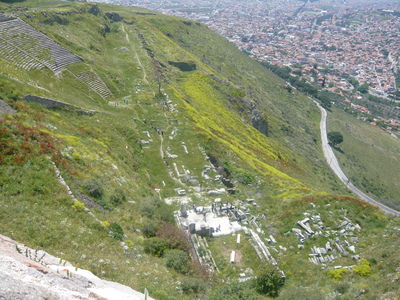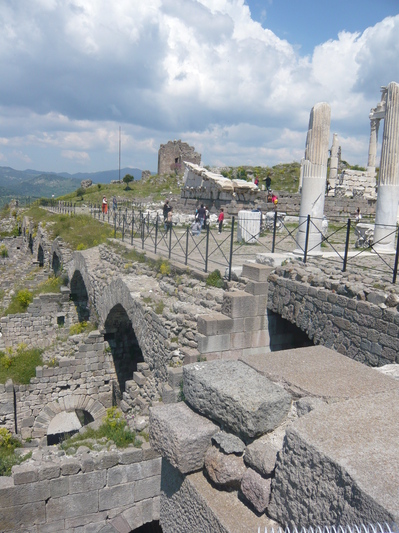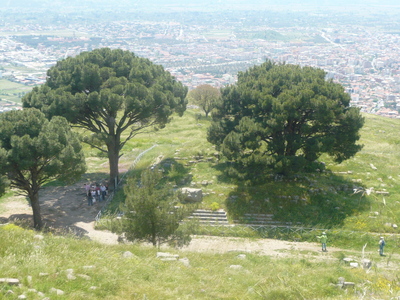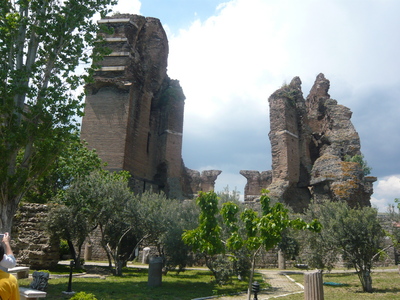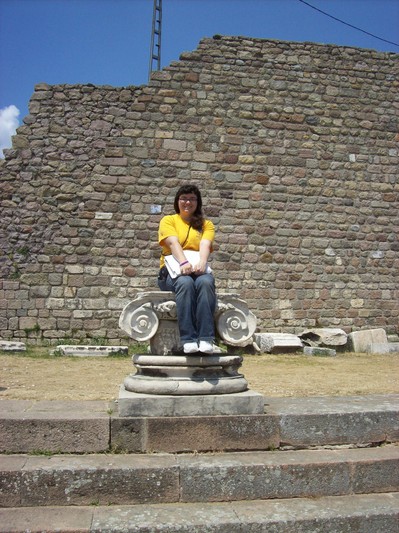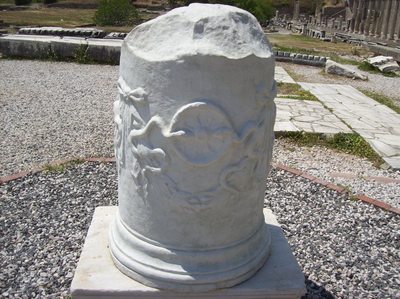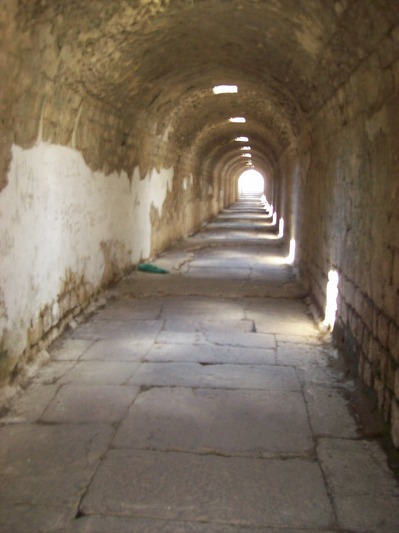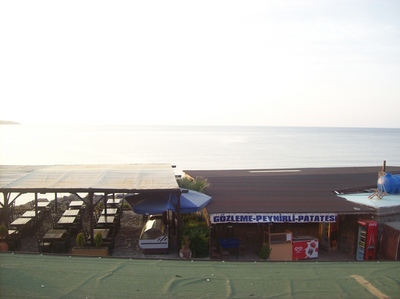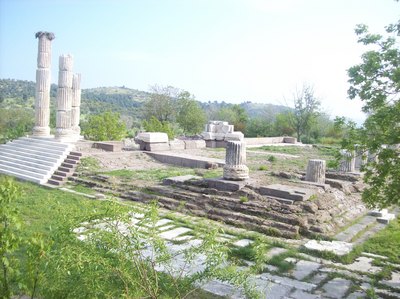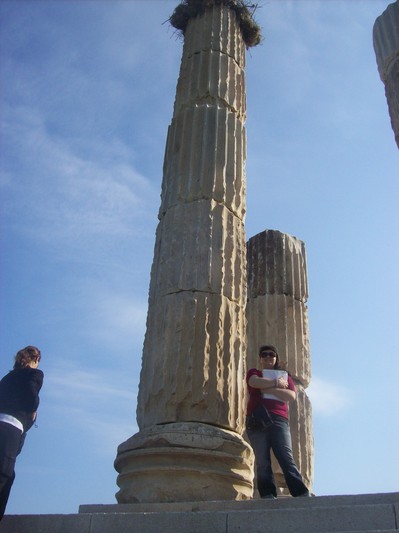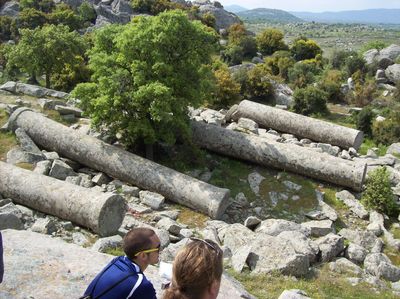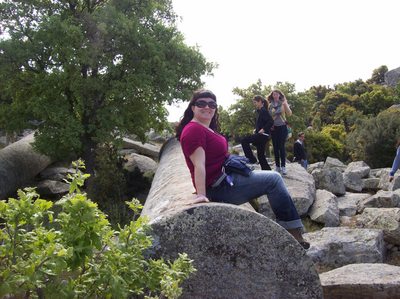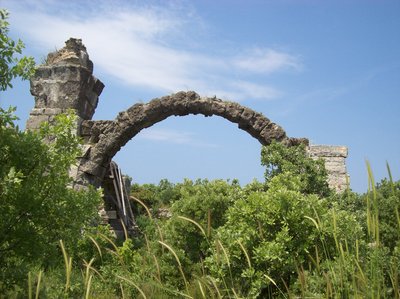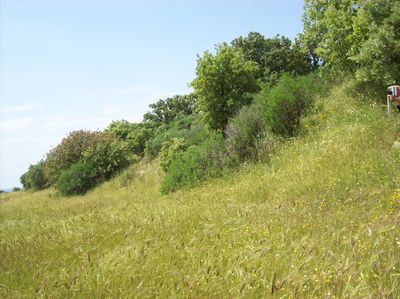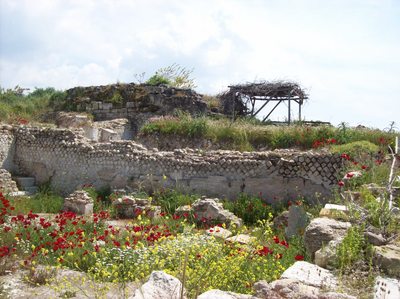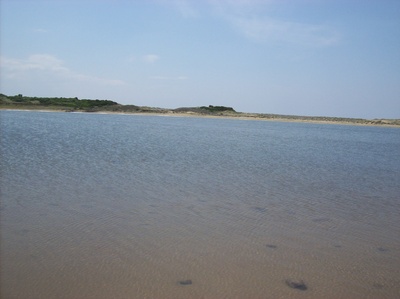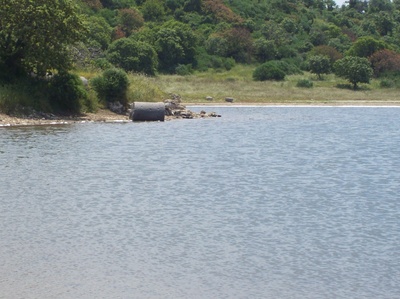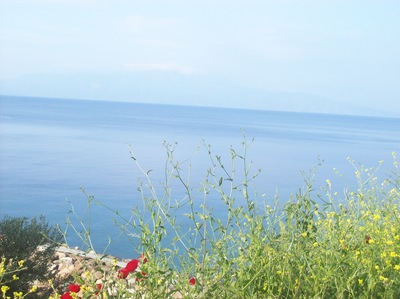Today in Ephesus we traveled to the House of the Virgin Mary, The ancient city of Ephesus and its Museum, a weaving center for rugs, a leather store, a traditional Turkish delicacies store, the Tiles store, and the Temple of Artemis.
The House of the Virgin Mary (Mereymana) holds a special place in my heart because it was my research topic for this trip. Though I do not identify as a Christian, I do believe that Mary was a very important figure in this religion and that she deserves more praise than she gets. The birth of her son is just as mysterious as her own death, and I wanted everyone to know that this house meant a great deal to people all around the world. My speech was not as clear as I had planned it to be, but I went over the points I wanted to go over, so I feel very good about it. No one will ever know with absolute certainty where the Virgin Mary is buried, if she were alive at all, but for me every fact has a trace of the truth in it, so the mind should always be open to possibilities. Regardless, the House was very simple and beautiful, just as the pictures I saw made it look. We all got a taste of the holy water that runs from underneath her house to a few fountains at the bottom of a hill nearby before heading to the shops nearby. I wish I had been in it longer, but her altar was well adorned and the house well taken care of by the Lazarist Priests and the nuns that lived there. I liked being able to make a wish not only with candles but in paper, as well as the calm and serene atmosphere of the area the House sat in. If the Virgin Mary did indeed live the rest of her life here, I can understand why.
This site is an official pilgrimage site for Catholics, Greek Orthodox, and Muslims, and every August 15th, her feast day is celebrated with a triple religious ceremony. She is said to have come to Ephesus with the Apostle John after the death and resurrection of Jesus Christ, some time around 40 CE/AD and lived to be 63 years old. She was buried in the house that she died in, and her house was not rediscovered until 1891 after a nun in Germany, Ann Catherine Emmerich, had a vision of the house and had a book written about it.
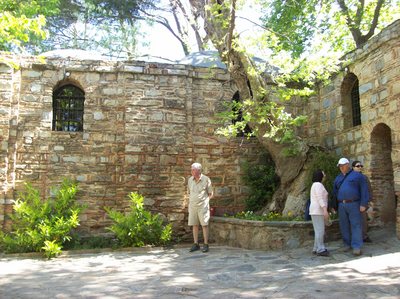
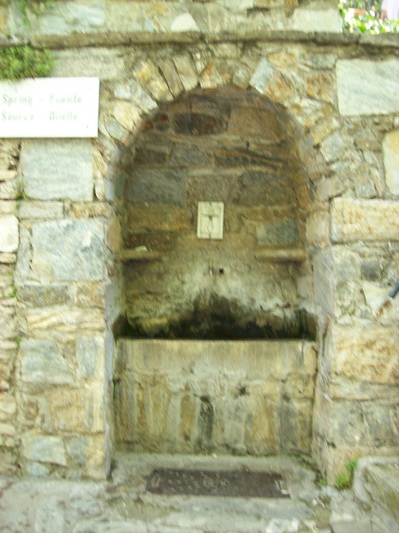
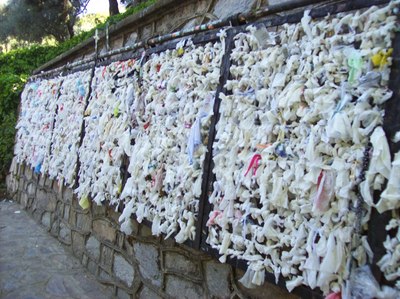
The site of the city of Ephesus was very stunning. The area around the Odeon, which served as a parliament and entertainment center, was shabby, but I loved the columns near it because I was able to test my knowledge of the column tops. The Odeon itself was an interesting touch of the old materials versus the new, and I liked only for the simple fact that we got to see how it looked both ways. I am not one to know how to mentally visualize stone on architecture, so it was nice to see how the look changed with the passing of the site from the Greeks to the Romans.
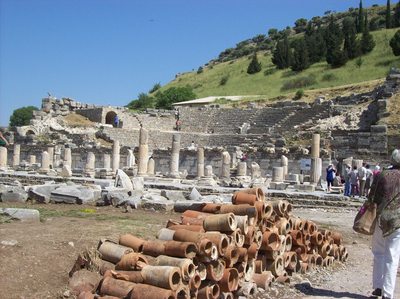
The road leading us from the Odeon to the main part of the city was a mixture of good and bad from me. I liked how it was explained that we would not be walking on this road in ancient times but on a walkway, which we saw later on down the road, but I did not like the marble stone used for the walkway. I am not the most balanced girl to begin with, and that marble was slippery and uneven in some spots to the point where it was unnerving to walk upon. The marble steps leading us down to the library were also uneven and broken off in huge sections, and I wondered how the older people managed to not hurt themselves at this site. However, I loved the 10 square meter shops, their marble signs, and the Roman backgammon boards we kept finding near the entrances as we traveled down. The walkway next to it was beautifully crafted, and the ever present cats there added a tone of humor to our visit as we all cooed over them.
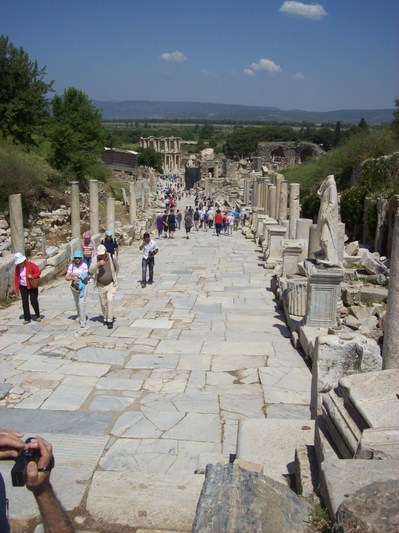
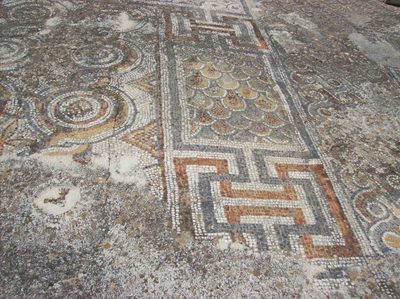
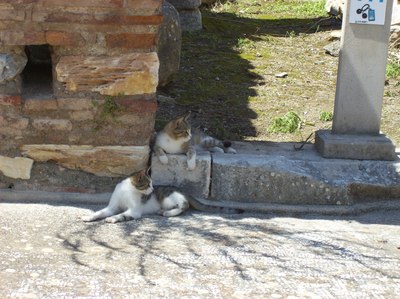
The Fountain of Trianus must have been huge if its image kept people in control at least on the surface. The walls were large and the fountain was deep, so it must have been quite a sight back in Roman times. The holes to the sewer I had an insane desire to open and explore below the site. One of my biggest dreams is to visit a necropolis under a city, preferably Paris or Rome, so every time I see an above ground necropolis I just want to go run around it and look into everything there is to know about the sarcophagi.
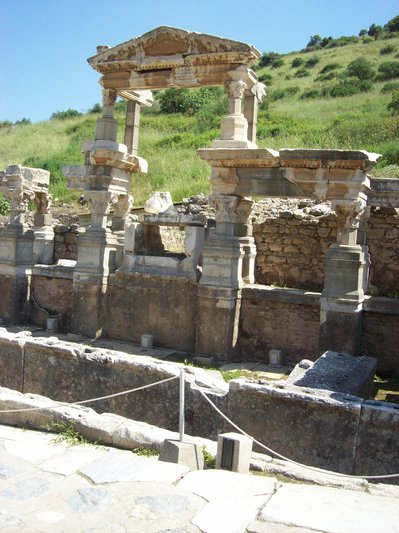
The marble piece with the cudushos symbol was a great way to connect the past to the present, as few people know where the current American medical symbol comes from.
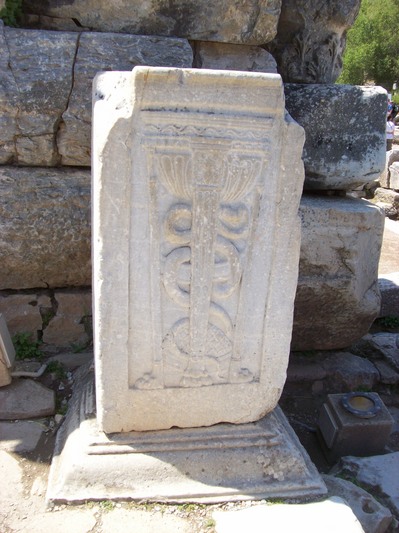
The Latrina was educational as well as funny – educational because I did not realize that women had their own private restroom, and funny because of all the guys in our group that sat down to test it out.
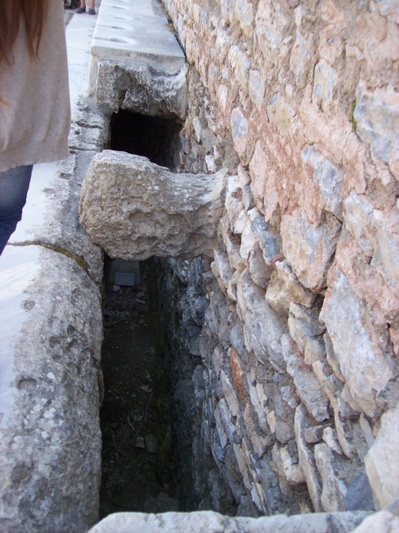
The roof to Terrace House 2 needs to be segregated more into the landscape of Ephesus. It stuck out like a sore thumb right in the middle of the landscape, so maybe painting it or planting trees around it will help. However, Terrace House 2 itself was absolutely brilliant. I loved looking through the glass walkway as we went along the 6 houses, and a lot of the metal staircases lined up almost perfectly with the stairs underneath, giving me the effect that I was walking through the houses themselves. The preservation of this part of the site was very advanced and refined, and I would love to come back in 10 years to see how much more of the marble wall tiles have been rearranged and put back in their original spots.
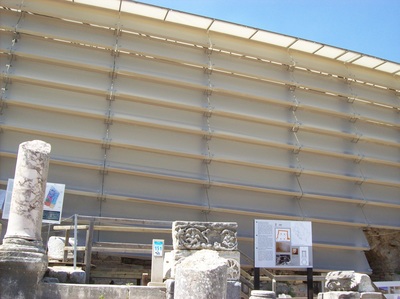
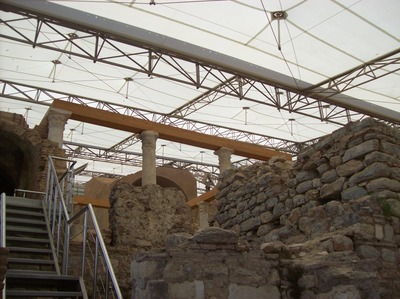
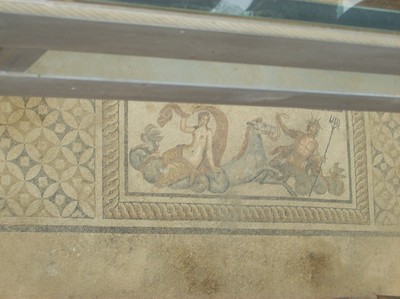
The Selsus library was a grand building, especially because it had 85% of its original fa�ade, but I thought it was a lot smaller than it should be for the 3rd greatest library of the ancient world. If it was only 1 story and had such a small interior, how did they fit 20,000 scrolls there? I did like how the entrances to the agora were named after freed slaves and that they were very respected in Roman society. I did not know that they learned so much and had so many connections, but that may be because of the stigmas I have grown up with about slavery in general.
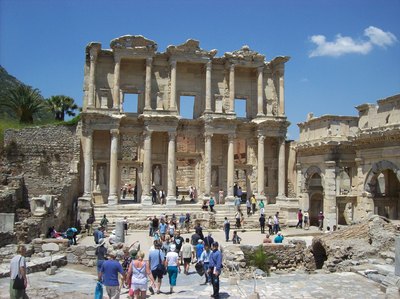
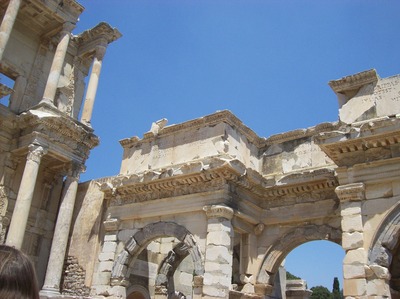
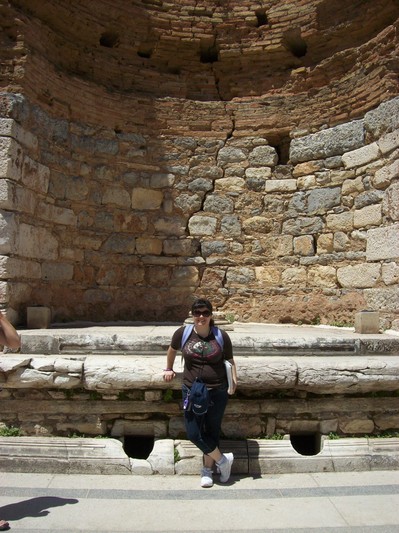
Ephesus Theatre was epic in all proportions. I can only imagine what it must have been like to sit with 10% of the population, 25,000 people, to watch gladiators fight for their lives or to hear Saint Paul and his disciple Timothy preach the thoughts and ideas of early Christianity. I wish we could have watched them rebuilding the one wall with a crane, but it makes sense to do it after hours and to shut down the main walkway towards the Theatre. I was actually excited to hear that it was the largest theatre in Asia Minor and that we would see more of them, as I find theatres and amphitheatres (though isn’t this one an amphitheatre?) to be some of the greatest buildings in the world.
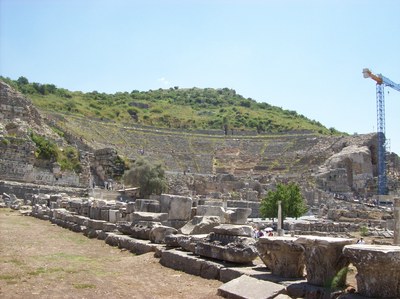
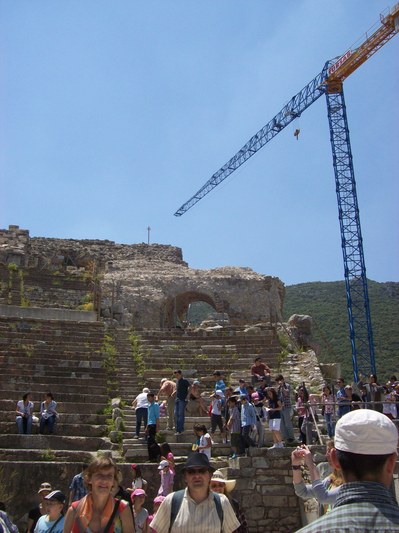
Ephesus Museum was no talk and all marble, pottery, artifacts, and other items recovered from Ephesus. The statue of Artemis shows the blending of the mother goddess religion (with her large amount of breasts) with the Greek Artemis (protector of women and young girls, goddess of the hunt).
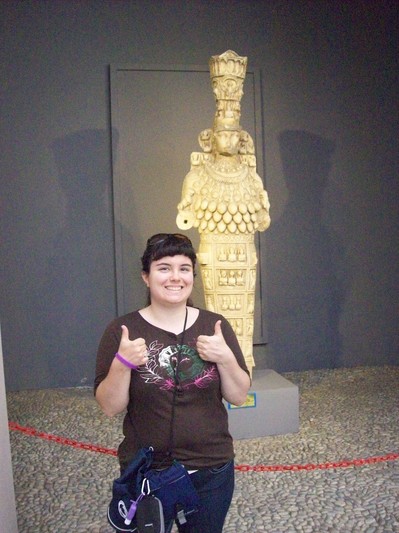
The weaving center showed us a site that few people get to see in their lives – the manufacture of carpets. I do not regret my wool-cotton $280 carpet because of all the time and effort those women put in to making each and every one of those carpets. The silk ones are beautiful, but to me not as soft as the wool carpets. The colors of the nomadic signs I felt were too bright and random for my tastes, so that is why I went for the undyed carpet colors.
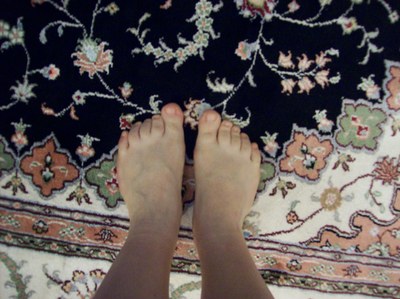
The leather store was a bit of a tourist trap, being near the road and having a fashion show, but I filmed it for my Geoblog and found it very insightful about Turkish culture. The women were stereotypically beautiful Turkish women, but the blond guy did not match that stereotype with the other tall, dark, and handsome male model. I found the reversible jacket part of the show to be very heterosexist, with the man helping the woman with her jacket, but maybe that is just my LGBT Ally coming out. Everything in that store was gorgeous, but my burgundy jacket caught my eye as soon as I got in there. I have never had the money or chances to get good quality leather like the ones found here, and since I rarely buy anything for myself, I figured that this $400 jacket was worth the money I had saved up for this trip.
Turkish Leather Fashion Show
I found the delicacies store to also be very tourist trap-like, especially with the other tour group in there before us. The man in the silver suit was very entertaining and informational about all of the different foods in there, but I went for pistachio Turkish delight and a box of apple tea with an herb cup and an evil eye pendant. Cameron, Amanda and I pooled out money and items so that we could get the “Buy 5, Get 1 Free Deal,” which I found to be very generous of silver-suited man to offer all of his customers. I would have loved to get a traditional Turkish tea set, but I am afraid it will break.
I have always loved watching clay being shaped and made into ceramics and pottery, so this stop was unique to me. Jo was a pro at learning pottery forming, and I could not believe how beautiful the designs were on the baptismal candleholders as I watched the head craftsman paint them. Everything in that store was very expensive for me, so I bought a simple blue and white ceramic cup holster instead of the bell with the Turkish flag on it that I really wanted.
Jo Making a Pot

The Temple of Artemis was a very sad site. I had a lot of empathy for the gypsies trying to make a living there, and I felt a bit that Nazim was being racist when he told us to watch out for them, but I believe that it comes with his culture, especially since gypsies are rarely accepting in most cultures anyway.
The Onder Grand Hotel of Kusdasi is great except for the fact that I cannot figure out how to connect to the internet. Several of us have gone down to tell them the internet is not working, but the language barrier leaves us very frustrated.
Location: Ephesus, Turkey


